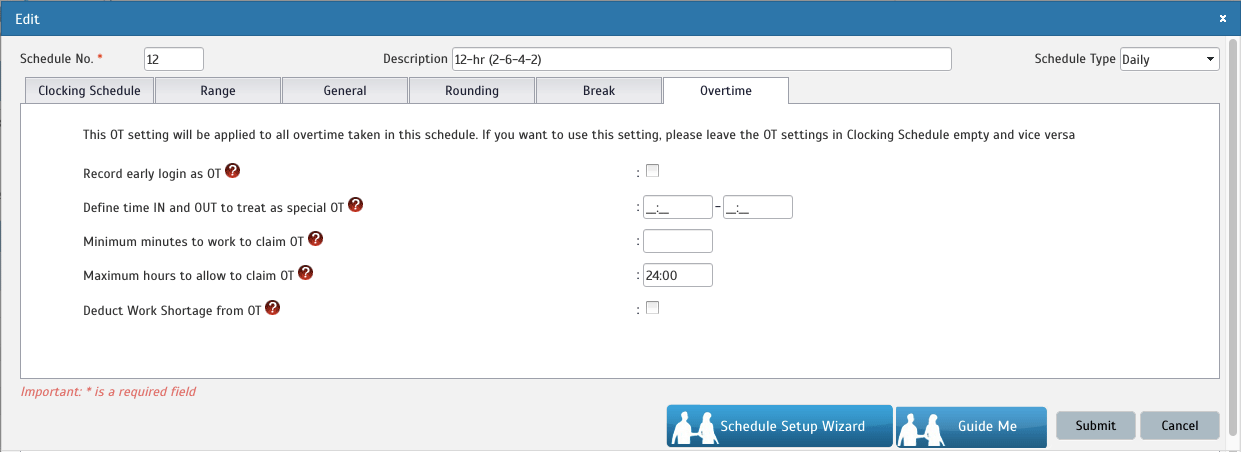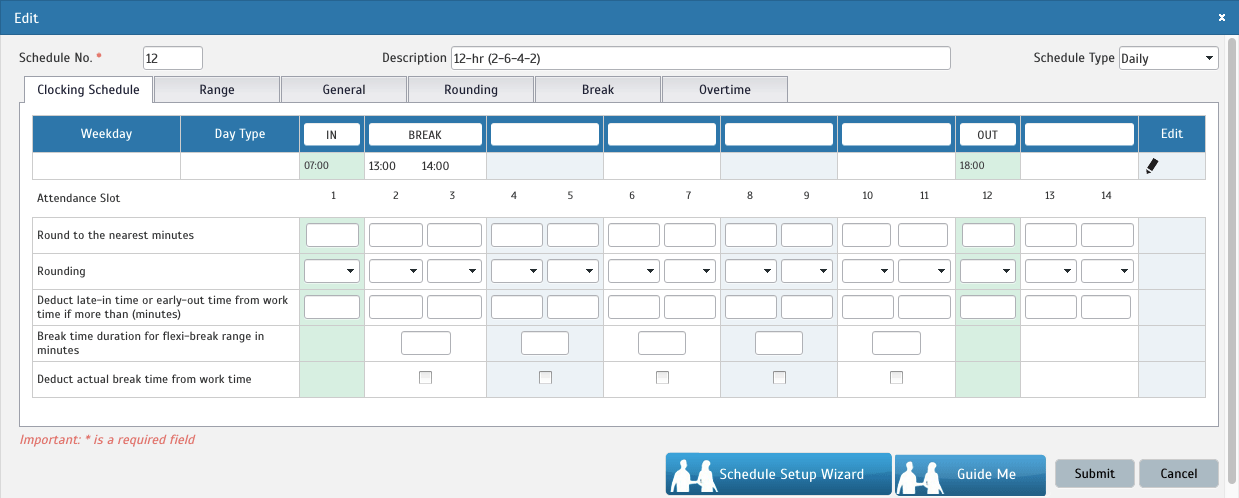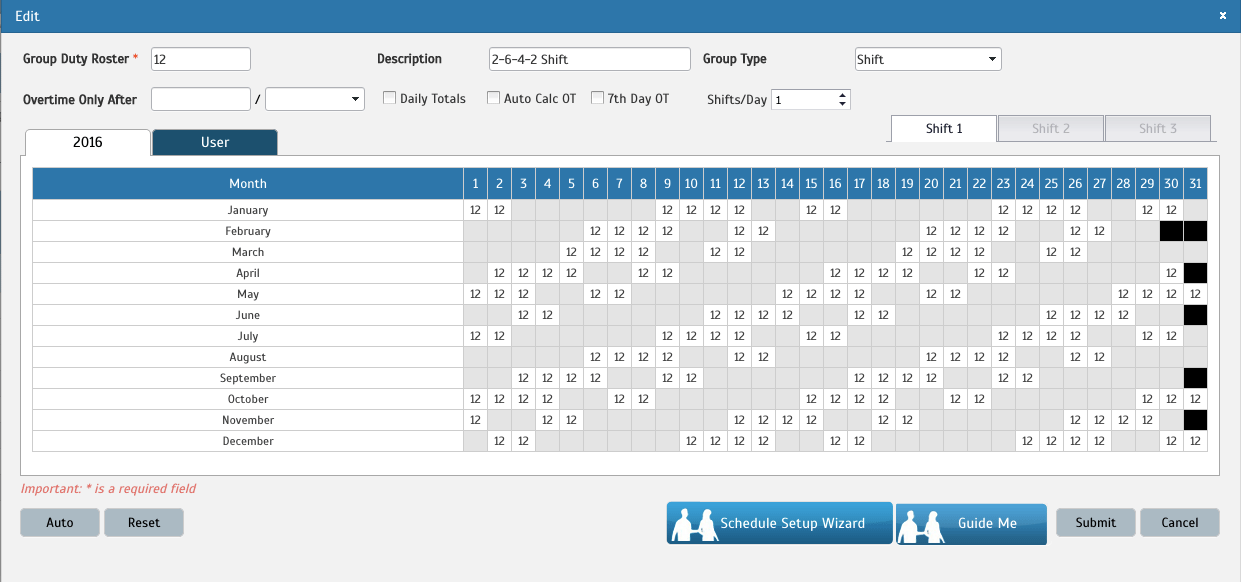| TimeTec has merged all of its solutions into www.timeteccloud.com, click to |

The healthcare industry is a labor-intensive industry globally. In the United States of America alone, the industry constitutes to more than 14 million jobs, which is equivalent to 10% of the total workforce in America during 2006 (Ozcan Y.A., 2009). Even so, the demand was expected to increase to 21% within 10 years. Healthcare is also the fastest job growth area according to the U.S. Department of Labor, 2006. The trend is mirrored in the same industry worldwide, and the demand is even higher in densely populated nations such as in China, Indonesia, and India.
The primary expenses for healthcare organizations are salary-related costs because operating them requires massive man-hours from various positions and job functions. As such, a firm grasp of staffing plans is crucial in managing healthcare organization. Planning nurses' shifts, for example, is a really intricate task considering the various factors to be taken care of in drawing out feasible schedules to ensure the smooth running of the healthcare organizations and their staff's satisfaction. The experience levels of the nurse, his or her specialties, competencies, turnover and skill mix are amongst factors to be considered when drafting staffing plan and shifts scheduling that is fair, effective and unbiased. The fact that the healthcare industry has the largest percentage of part-time workers, 16%, makes staffing plans even more challenging due to the lack of commitment, lack of skill mix and the high turnover rate among part-time staffers (S. Leiyu, 2007).


Shifts and nurses go in tandem; there are no two ways about it. A preferred and traditional shift is an 8-hour shift with a variable of 10 or 12-hour shifts or a mixture of all three. Studies on both nurses and physicians have indicated that working 8-hour shifts on a 5-day rotation has been proven to improve patient care as compared to 12-hour shifts on a 3-day rotation. However, the 10 and 12-hour shifts provide more added advantages to the staff such as consecutive days off, more weekend days off and many more, but these shifts would require more staff and may gradually increase staff fatigue. In nurse working environment, there are also 4-hour shifts useful for peak activity periods and part-time staff, (Polly. G.Z. 2002). Combined with staff rotations, weekend requirements, requests, holidays and vacation days, managing staff scheduling is definitely a challenge to maintain service quality and order, and the choice in shift pattern can affect turnover, absenteeism and job satisfaction amongst the involved staff.

On top of the different shift types, there are different types of work schedules for nurses such as cyclical (permanent) or flexible (discretionary). Under the cyclical work schedule, employee's shifts are constant. The schedules are usually planned for a four to six-week period and is repeated period after period. The good thing about this is, the plan is stable and the system allows the employees to select the shift that best fits their schedule. However, having chosen that, the nurses are locked into that shift. Flexible shifts, on the other hand, provide flexibility to the hospitals to assign work schedules yet the planning of flexible schedules requires the management to continuously change the schedule to fit the requirements of the hospitals and match it with the availability of labor.
In drafting nurses shift schedule plans, considerations on these five factors are greatly required.
Patients' Coverage : Refers to whether or not the patients' needs are met, continuity of care is present and fair coverage is given to all patients.
Schedule Quality : Refers to how well the staff likes the shift plan, and if the plan provides equalization of rotation, weekend days off and work stretch.
Stability of the Plan : Nurses want assurance about the stability of the schedule because change could/would cause chaos.
Schedule Flexibility : Refers to the schedule's ability to adapt to environmental changes, for example, understaffing, nurses changing amongst shifts, etc.
Cost Factor : Are resources being consumed wisely? Would alternative schedules produce better care at lower costs?

While the relevant supervisors can sort out scheduling manually, when it can be done efficiently and without any bias factor, it's the ideal way to go. Integration of a biometric system in time attendance's implementation could bring about several benefits to the nurses' shift management. Biometric verification is a technology that uses human's body parts to identify one's true identity. Fingerprint, for example, is unique to each individual and it's impossible to find someone who has the exact fingerprint pattern and minutia like yours. Face technology is another novel biometric technology that reads important points on a face to produce a calculation via an exclusive algorithm. The contactless nature of the face biometric product makes it relevant and appealing to those who use gloves or are in situations where presenting fingerprints could be cumbersome, for example, surgeons, physicians, nurses, etc. Hence, when the biometric traits are verified as yours, the data recorded will be saved as your own genuine record.
According to Hospital Administration and HR Management by R.C. Goyal, while the use of hi-tech machines could be costly, they can increase efficiency, save time and reduce human bias to a great extent (2005). For example, frequently, there are disputes over late reporting on duty between the administrative staff and other employees. Installation of computerized electronic time recorder to record the arrival and departure time of employees will be of immense use and they (employees) will feel that their time has been recorded correctly. Timekeepers will have no dispute over the attendance data of employees. Department heads also are able to obtain daily information about the man-hours employed and lost by their employees, giving the hospital a clear indication of its labor's ROI. Therefore, automated biometric systems can not only eradicate the bias factors and differences which arise in the minds of nurses and department heads, but timekeepers and HR managers will also get peace of mind knowing that the system keeps all the accurate data, records, and reports.
Nevertheless, there are issues that could arise in the healthcare industry with regards to biometric implementation such as the performance of the biometric machines due to the fact that many of the nurses have chronically dry hands, a condition resulting from frequent hand-washing and the use of alcohol-based hand sanitizers. This might undermine the performance of biometric readers. The solution has also been found with the latest face recognition technology that deploys contactless verification.

Biometric terminals make up one crucial part to assure accurate collection of data; the management software is crucial to determine the availability and the accuracy of data and reports. With the software, all data from the terminals will be treated according to the rules, settings and policies set in the application.
TimeTec TA, an online comprehensive and powerful time control management application is compatible with all FingerTec Webster-loaded biometrics time attendance devices. TimeTec TA comes complete with powerful features, allowing users to automate company's housekeeping, attendance tracking, labor scheduling, data collection and access control in a centralized database, accessible online by authorized administrators and also users.
With 31 highly sought after types of reports and listings, TimeTec TA can definitely solve the common time-management related labor problems in the hotel industry.
Take one sample where one hospital uses 12-hour shifts of three-on, three-off. This means that staff work three weekends (assuming Friday is a weekend) in a row and then have the next three weekends off. It is appealing to staff because there are 8 days off in a row, hence, they get a "mini-vacation" every 6 weeks.
| Monday | Tuesday | Wednesday | Thursday | Friday | Saturday | Sunday |
| Off | Off | Off | Off | 12-hour | 12-hour | 12-hour |
| Off | Off | Off | 12-hour | 12-hour | 12-hour | Off |
| Off | Off | 12-hour | 12-hour | 12-hour | Off | Off |
| Off | 12-hour | 12-hour | 12-hour | Off | Off | Off |
| 12-hour | 12-hour | 12-hour | Off | Off | Off | Off |
| Off | Off | Off | Off | 12-hour | 12-hour | 12-hour |
| Table 1: The 12-hour 3 weekends on and 3 weekends off | ||||||
| Monday | Tuesday | Wednesday | Thursday | Friday | Saturday | Sunday |
| 10-hour | 10-hour | 10-hour | 10-hour | 10-hour | 10-hour | 10-hour |
| Off | Off | Off | Off | Off | Off | Off |
| 10-hour | 10-hour | 10-hour | 10-hour | 10-hour | 10-hour | 10-hour |
| Off | Off | Off | Off | Off | Off | Off |
| 10-hour | 10-hour | 10-hour | 10-hour | 10-hour | 10-hour | 10-hour |
| Off | Off | Off | Off | Off | Off | Off |
| 10-hour | 10-hour | 10-hour | 10-hour | 10-hour | 10-hour | 10-hour |
| Off | Off | Off | Off | Off | Off | Off |
| Table 1: The 10-hr 7 days on and 7 days off, cyclical throughout the year | ||||||
| Monday | Tuesday | Wednesday | Thursday | Friday | Saturday | Sunday |
| 12-hour | 12-hour | Off | Off | 12-hour | 12-hour | 12-hour |
| 12-hour | Off | Off | Off | Off | Off | Off |
| 12-hour | 12-hour | Off | Off | 12-hour | 12-hour | 12-hour |
| 12-hour | Off | Off | Off | Off | Off | Off |
| Table 2: The 12-hour 2 days on and 2 days off, 4 days on and 6 days off (2-2-4-6) | ||||||
| Monday | Tuesday | Wednesday | Thursday | Friday | Saturday | Sunday |
| 12-hour | 12-hour | Off | Off | Off | Off | Off |
| Off | 12-hour | 12-hour | 12-hour | 12-hour | Off | Off |
| 12-hour | 12-hour | Off | Off | Off | Off | Off |
| Off | 12-hour | 12-hour | 12-hour | 12-hour | Off | Off |
| Table 3: The 12-hour 2 days on and 6 days off, 4 days on and 2 days off (2-6-4-2) | ||||||
Regardless of the schedule type preferred by a healthcare organization, TimeTec TA is able to cater to various schedules possible, cyclical or flexible.
The software has features suitable for setting up hospital nurses' staffing schedules. It can contain up to 999 schedules and 999 groups and link up to 999 combinations of FingerTec biometric and card terminals to one centralized application. Using TimeTec TA could save considerable time in schedule planning because all the possible schedules that the organization might be using can be preset in the system waiting for them to be assigned to the relevant nurses. TimeTec TA provides rules that can be set according to the healthcare organization's policies and such; rules on clocking, time range, general, tolerance, break and overtime for each schedule can be specifically defined.
With every rule, policy, data, staff information and activities stored in one server, these records and reports could be retrieved at any time, from anywhere. Healthcare organization could improve in the way it runs its nurses and manage their effectiveness in patient care.

Setup of Schedule 12, for 12-hour shift, 2 days on and 6 days off, 4 days on and 2 days off.

Generate the roster automatically for the whole year based on the shift created.

Set the rules for each schedules, for example Overtime rules; when the overtime rules will applies, maximum hours to allow overtime claims, etc.
System automation definitely brings substantial benefits to large organizations and automation on staff attendance is especially crucial for places such as healthcare organizations that are labor intensive. Improvements on the staffing system are expected to improve labor time utilization, effectively reduce excessive labor cost and strengthen the management of the entire human resources.
Looking at it closely, nurse scheduling management can be better managed by the introduction of biometric verification systems and powerful time control management software, which can handle not only nurses' time attendance but also their intricate shifts scheduling. Biometric systems such as fingerprint and face have been proven to be reliable and convenient, able to reduce the question mark of who's who in attendance reporting. And when all data and records are centralized, making them accessible to relevant higher level personnel, they can then save a lot of time and headache on scheduling nurses' shifts.
An investment on automation system could be seen as costly but with the accuracy of data and its efficacy in handling all the necessary functions, in the long run, it'll still be beneficial to the organizations.
| References |
| Alistair P. Goldsmith, Dennis P. Nickson, Donald H. Sloam, Roy C. Wood, 2002, Human Resources Management for Hospitality Services, London: Thomson Learning |
| Andrews, Sudhir, 2009, Hotel Housekeeping: A Training Manual, New Delhi: Tata McCraw-Hill Publishing Company Ltd. |
| Grobler, Peter A., Warwich Surette, Michael R. Carell, Norbert F.Elbert, Robert D. Halfi eld, 2006, Human Resource Management in South Africa 3rd Edition, London: Thomson Learning |
| McAfee R. Bruce, Champagne J. Paul, 1994, Effectively Managing Troublesome Employees, CT: Quorum Books |
| Nankervis, Alan, 2005, Managing Services, NY: Cambridge University Press |
| Singh, L.K., 2008, Fundamentals of Tourism and Travel, Delhi: ISHA Book |